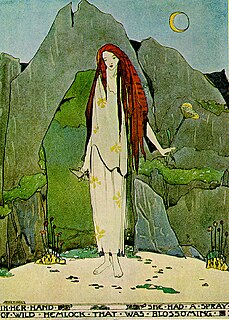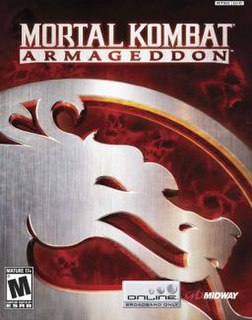Latvian mythology is the collection of myths that have emerged throughout the history of Latvia, sometimes being elaborated upon by successive generations, and at other times being rejected and replaced by other explanatory narratives. These myths stem from folk traditions of the Latvian people and pre-Christian Baltic mythology.

The Fremen are a group of people in the fictional Dune universe created by Frank Herbert. First appearing in the 1965 novel Dune, the Fremen inhabit the desert planet Arrakis, which is the sole known source in the universe of the all-important spice melange. Long overlooked by the rest of the Imperium and considered backward savages, in reality they are an extremely hardy people and exist in large numbers. The Fremen had come to the planet thousands of years before the events of the novel as the Zensunni Wanderers, a religious sect in retreat. As humans in extremis, over time they adapted their culture and way of life to survive and thrive in the incredibly harsh conditions of Arrakis. The Fremen are distinguished by their fierce fighting abilities and adeptness at survival in these conditions. With water being such a rare commodity on the planet, their culture revolves around its preservation and conservation. Herbert based Fremen culture, in part, on the desert-dwelling Bedouin and San People.

A House of Pomegranates is a collection of fairy tales, written by Oscar Wilde, that was published in 1891 as a second collection for The Happy Prince and Other Tales (1888). Wilde once said that this collection was "intended neither for the British child nor the British public."
Eilistraee, also referred to as "The Dark Maiden", is a fictional deity in the Forgotten Realms campaign setting of the Dungeons & Dragons fantasy role-playing game. In the game world, she is a goddess in the drow pantheon, and her portfolios are song, dance, swordwork, hunting, moonlight and beauty.
Estonian mythology is a complex of myths belonging to the Estonian folk heritage and literary mythology. Information about the pre-Christian and medieval Estonian mythology is scattered in historical chronicles, travellers' accounts and in ecclesiastical registers. Systematic recordings of Estonian folklore started in the 19th century. Estonian mythology seems to be heavily influenced and borrowed from Vedic religion. Pre-Christian Estonian deities included a god known as Jumal or Taevataat in Estonian, corresponding to Jumala in Finnish, and Jumo in Mari. Numerous folktales of the religion are similar to those in Indo Aryan and Buddhist mythologies, which shows a wide influence but not formal conversion to them.

The King Must Die is a 1958 bildungsroman and historical novel by Mary Renault that traces the early life and adventures of Theseus, a hero in Greek mythology. Naturally, it is set in Ancient Greece: Troizen, Corinth, Eleusis, Athens, Knossos in Crete, and Naxos. Rather than retelling the myth, Renault constructs an archaeologically and anthropologically plausible story that might have developed into the myth. She captures the essentials while removing the more fantastical elements, such as monsters and the appearances of gods. The King Must Die was lauded by critics, with New York Times reviewer Orville Prescott calling it "one of the truly fine historical novels of modern times." Renault wrote a sequel, The Bull from the Sea, in 1962.

In mythology, legend or fiction, a magic sword is a sword with magical powers or other supernatural qualities. Renowned swords appear in the folklore of every nation that used swords.
Barbarika (Barbarīka), also spelt as Barbareek(a), is a Hindu god, particularly worshipped in western India.

Mortal Kombat: Armageddon is the seventh main video game in the Mortal Kombat fighting game series. The PlayStation 2 and Xbox versions were released in October 2006, with a Wii version released on May 29, 2007 in North America. The Xbox version was not released in PAL territories. Chronologically the final chapter in the original Mortal Kombat storyline, it features virtually every character from the previous games. Players select one of them and battle a selection of the other fighters to determine the fate of the Mortal Kombat universe.

Hindu mythological wars are the wars described in the Hindu texts of ancient India. These wars depicted both mortals of great prowess as well as deities and supernatural beings, often wielding supernatural weapons of great power. Hindu teachings prescribe war as the final option, to be employed only after all peaceful methods are exhausted. Participation in righteous war, or dharmayuddha, was said to be honourable and was a principal duty of the Kshatriya or warrior caste, and victory in such wars was regarded as a matter of honour.

The Aztec religion originated from the indigenous Aztecs of central Mexico. Like other Mesoamerican religions, it also has practices such as human sacrifice in connection with many religious festivals which are in the Aztec calendar. This polytheistic religion has many gods and goddesses; the Aztecs would often incorporate deities that were borrowed from other geographic regions and peoples into their own religious practices.
The Noble Warriors trilogy is a fantasy series, written by British novelist William Nicholson. The first book, Seeker, was published in 2006, as was the second in the trilogy, Jango. The third book, Noman, was published in September 2007.

Conan the Adventurer is an animated television series adaptation of Conan the Barbarian, the literary character created by Robert E. Howard in the 1930s. Produced by Jetlag Productions in association with Sunbow Productions, the series debuted on September 13, 1992, ran for 65 episodes and concluded on November 22, 1993. The series was developed by Christy Marx who served as the sole story editor.

Jango (2006), is the second book in the Noble Warriors Trilogy, written by William Nicholson.

Noman (2007) is the third book in the Noble Warriors trilogy, written by William Nicholson.

In Games Workshop's Warhammer Fantasy and Warhammer 40,000 fictional universes, Chaos refers to parasitic entities which live in a different plane of reality known as the Warp or Immaterium in Warhammer 40,000 and as the Realm of Chaos in Warhammer Age of Sigmar. The term can refer to these warp entities and their influence, the servants and worshippers of these entities, or even the parallel universe in which these entities are supposed to reside. The most powerful of these warp entities are those known as the Chaos Gods, also sometimes referred to as the Dark Gods, Ruinous Powers, or the Powers of Chaos. Similarities exist between the Warhammer idea of Chaos and the concept of Chaos from Michael Moorcock's Elric saga, which also influenced D&D's alignment system. Further similarities can be seen with the godlike extradimensional Great Old Ones of horror writer H. P. Lovecraft's stories.

In Aztec mythology, Creator-gods are the only four Tezcatlipocas, the children of the creator couple Ometecuhtli and Omecihuatl "Lord and Lady of Duality", "Lord and Lady of the Near and the Close", "Father and Mother of the Gods", "Father and Mother of us all", who received the gift of the ability to create other living beings without childbearing. They reside atop a mythical thirteenth heaven Ilhuicatl-Omeyocan "the place of duality".












